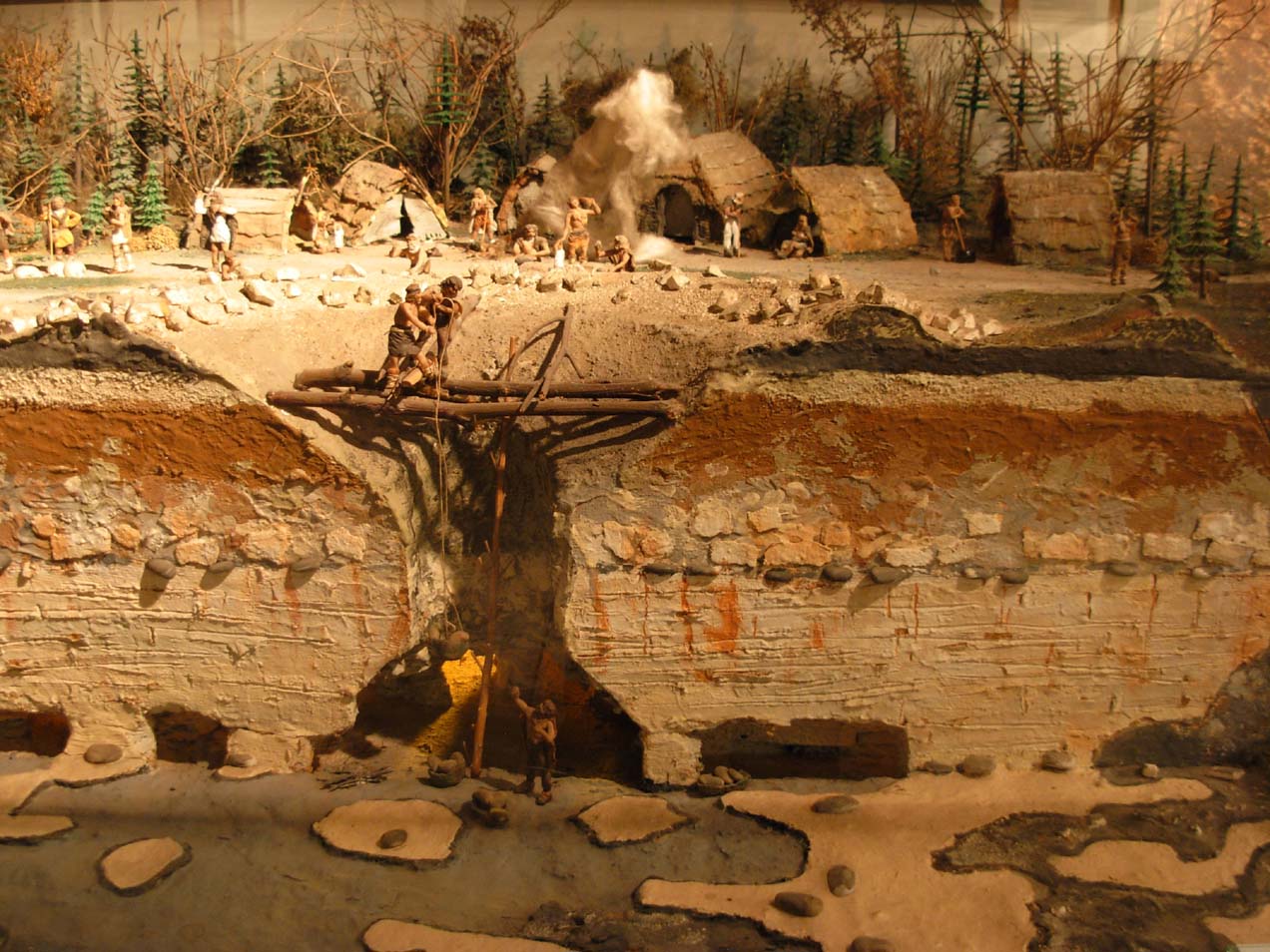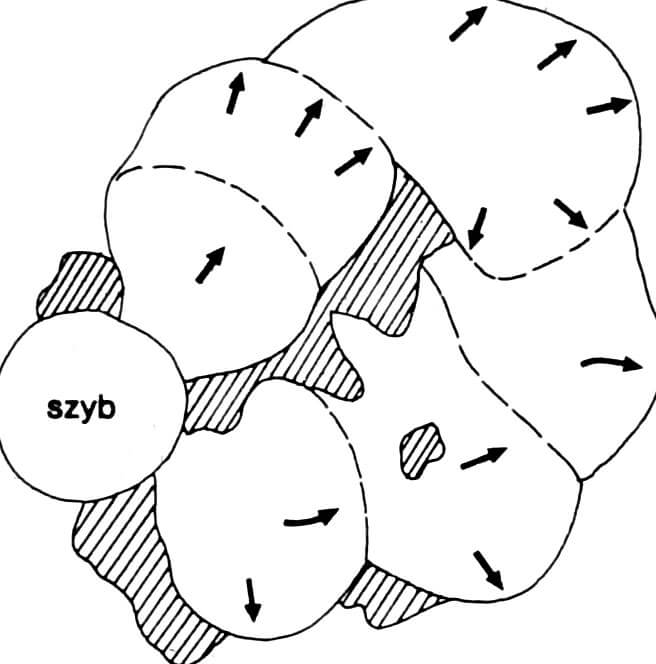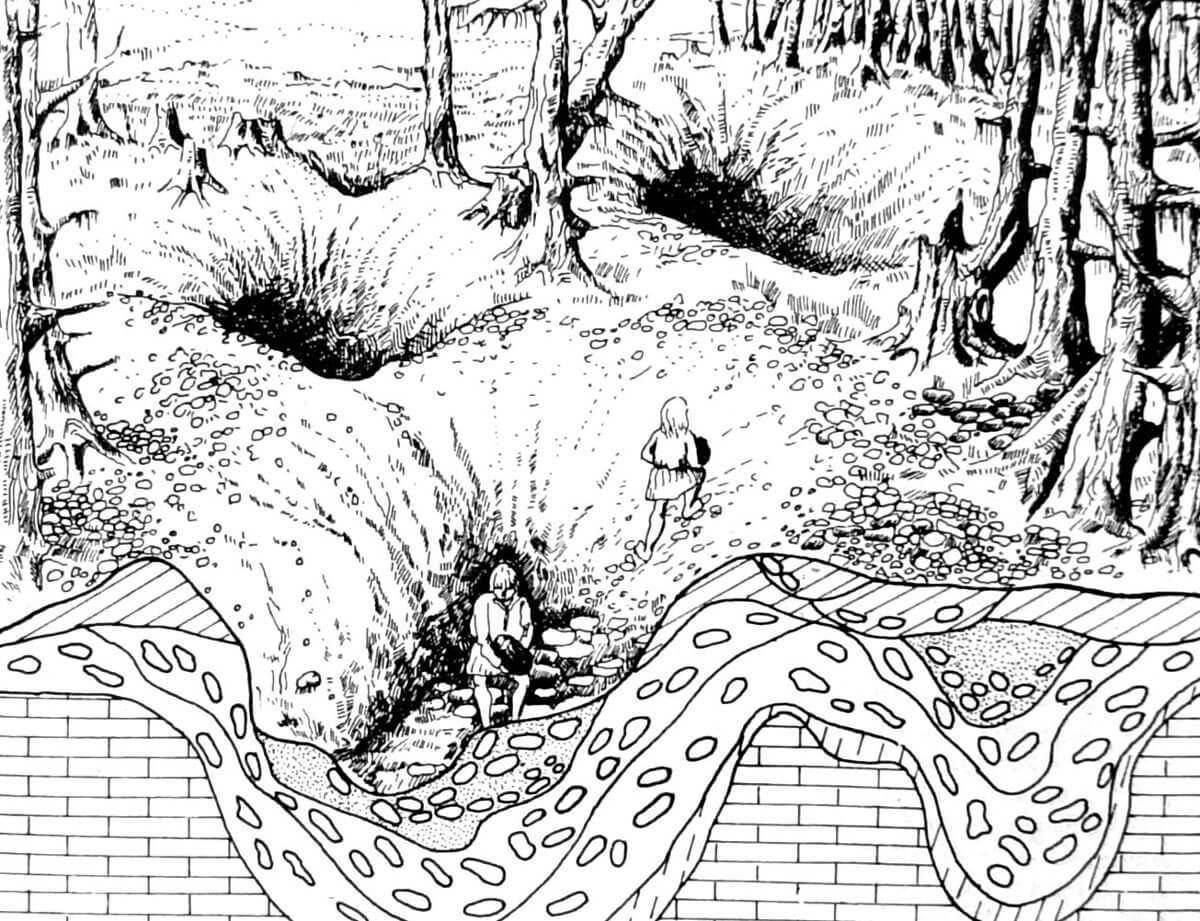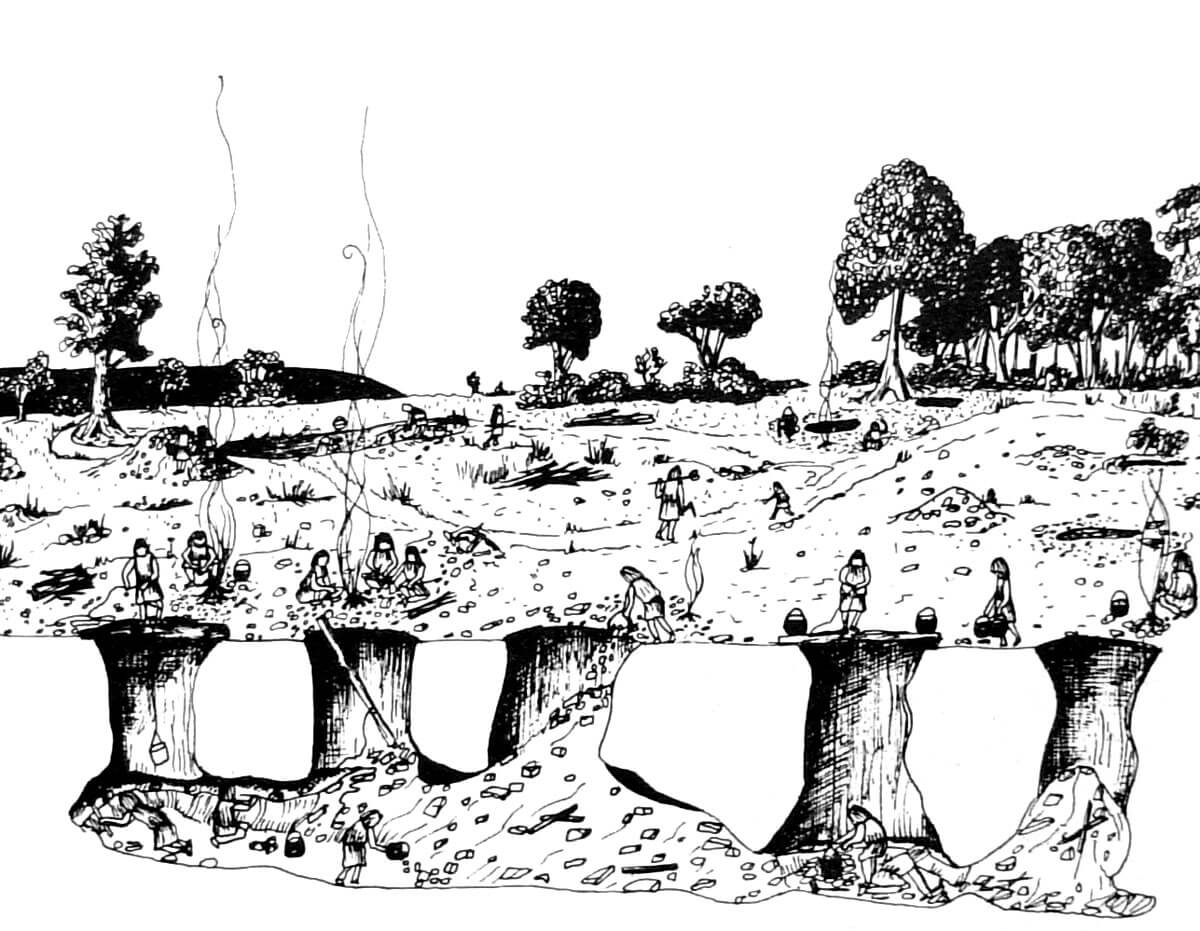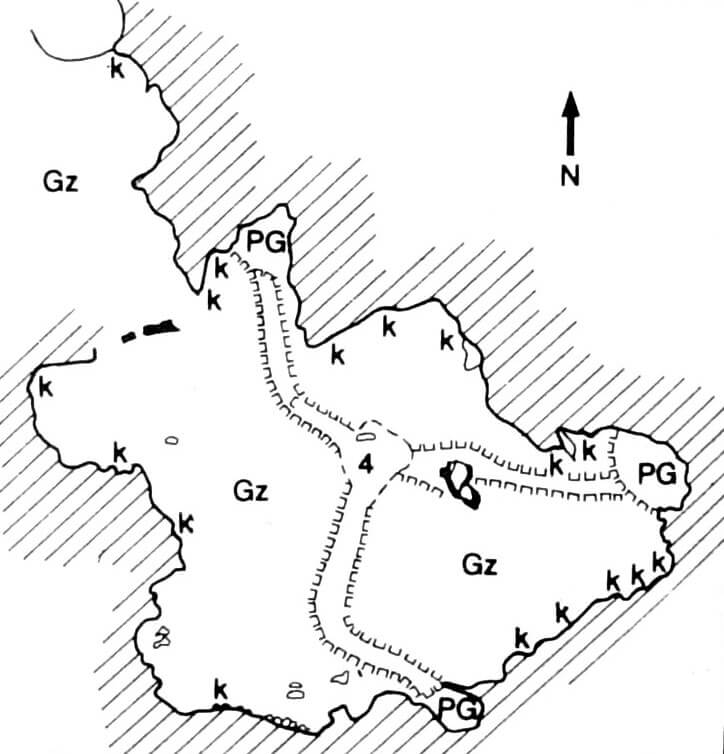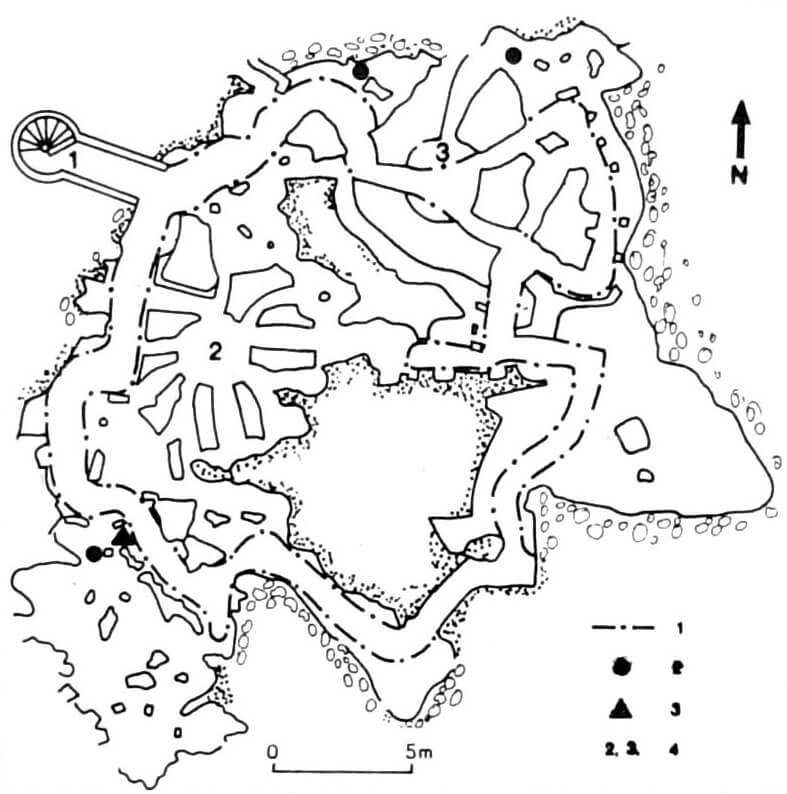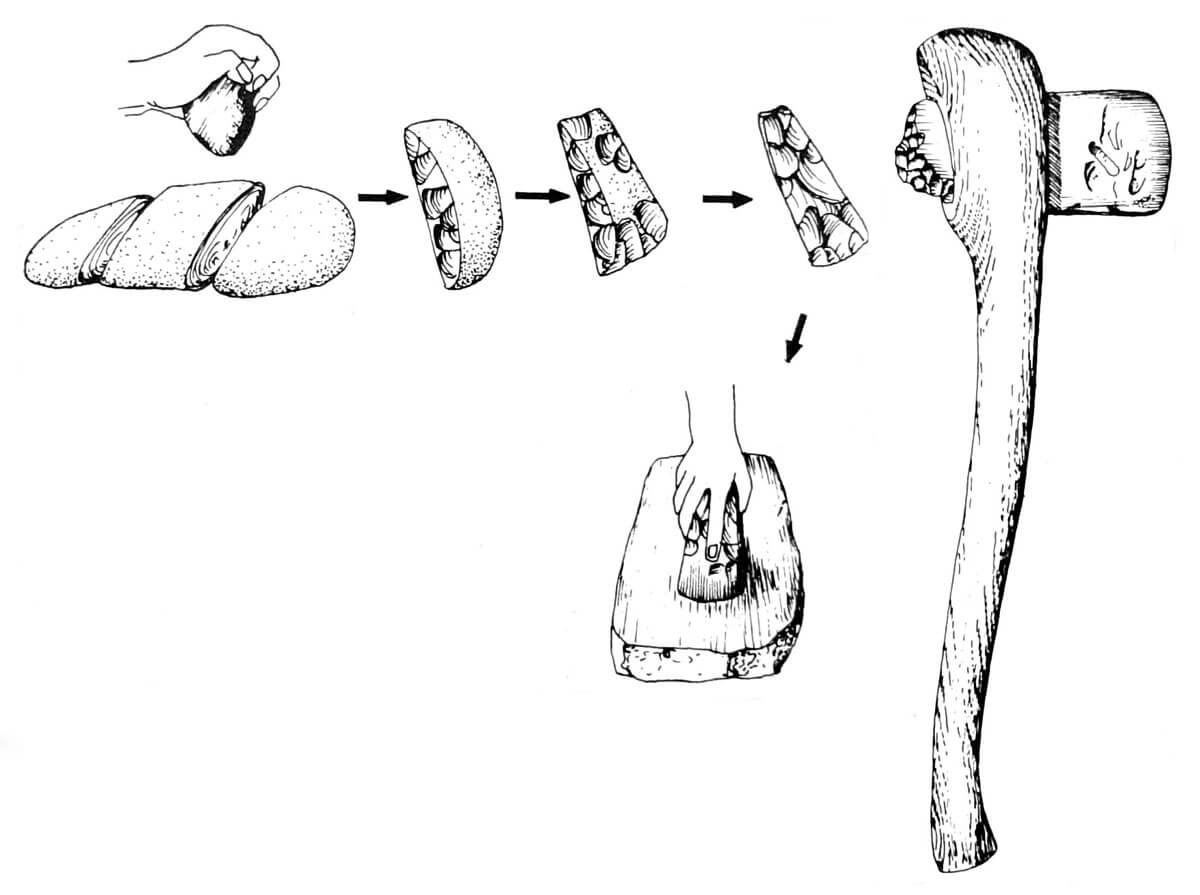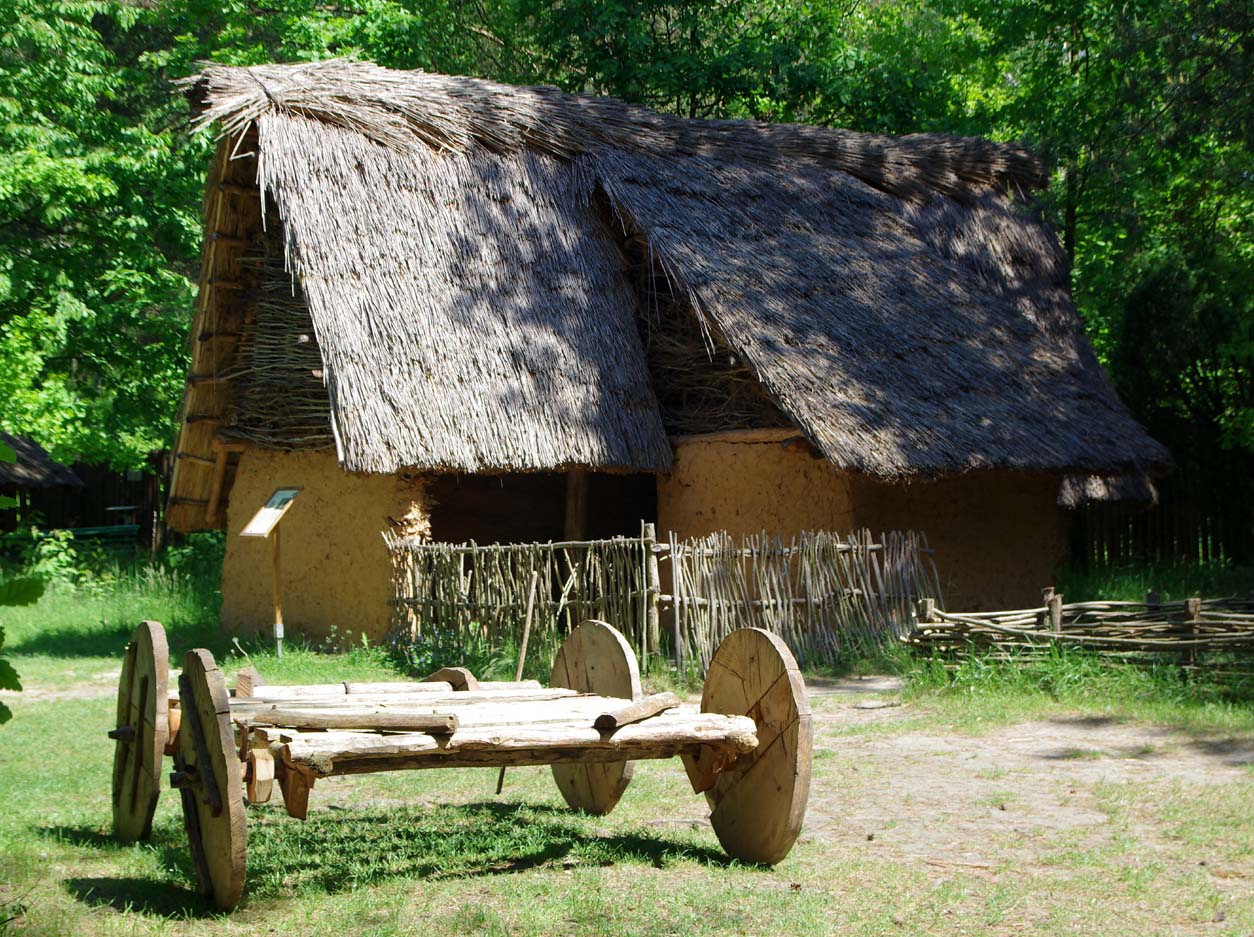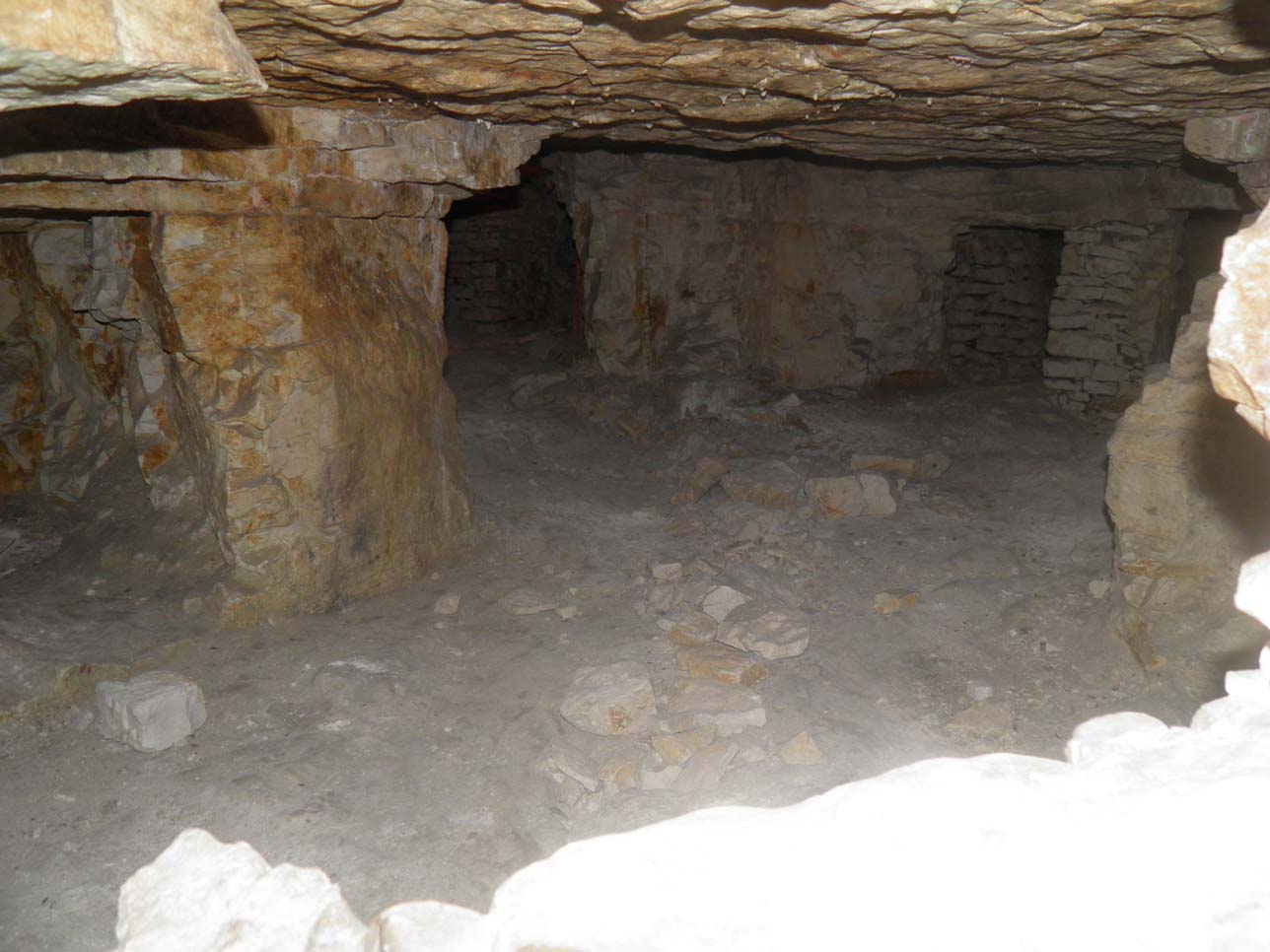History
The flint mines in Krzemionki Opatowskie were exploited in the years of 3900-1600 BC and belonged to one of the most important in Europe. In neolithic the mineral was mined by the population of the Funnelbeaker Culture and the Globular Amphora Culture, and in the Bronze Age by the population of the Mierzanowice culture, whose economy was no longer based on hunting and gathering, but on farming and animal husbandry. The ability to process flint and stone became more and more important as tools and weapons were made of them. The increased demand for flint resulted in the necessity of extracting its larger quantities from the main limestone or chalk rock. This is how the mines of this raw material were created, reaching from a depth of few to several meters and huge mining fields. Part of the flint excavated here was processed in nearby settlements and later spread over a distance of 660 km.
In the early Bronze Age, around 1800-1600 BC, flint mining collapsed. The mines in Krzemionki were still functioning but had only local significance. After a period of neolithic exploitation, the mining area overgrown by the forest for a long time, thanks to which traces of prehistory were not destroyed. It was not until 1913 that the village of Krzemionki was established, the forests were uprooted and then the mines discovered.
Architecture
The mining field in Krzemionki had a shape similar to a parabola with a length of about 5 km and a width of 30 to 180 meters. Within it there were about 3-4 thousand shafts (or more, as some were destroyed). Flint deposits occurred at various depths, from 2 to over 8 meters, which affected the way it was mined. There were four types of mining facilities that differed in terms of mining method and depth. They were pit, niche, pillar-chamber and chamber mines.
In the western part of the mining field, where flint was already at depths of about 2 meters, simple pit shafts with a diameter of about 3 to 5 meters were dug in clay. Of these, shaft No. 6 about 3.5 meters deep and approximately 5 meters in diameter had a more complicated form. Three niches departed from its main pit, two of which were separated by limestone pillars. The third, which probably defined the main direction of exploitation (as indicated by its more than 3 meters width), collapsed. A passage to the chamber of the neighboring mining unit was also created on the north and east side. In the western part of the shaft there was a place where the spoil was stored. In this way, only part of it was mined to the surface, which greatly facilitated exploitation. It was also easier to get out of the deep shaft, because the debris of limestone debris formed a natural shelf, a kind of step. Clay was the ceiling of niches, while mining was carried out in solid rock.
The most characteristic for Krzemionki, and also the most complicated method of extracting the flint was to make shafts up to 8-9 meters deep in shafts and underground chambers (chamber-pillar system). It were huge operating units that supplied a large amount of flint. The chambers successively connected with each other, giving the impression of a passages system. In order to protect the ceiling against collapse, pillars and the so-called dry floors were made. They were piles of loose limestone debris, usually of large surfaces, removed under the walls after prior selection of flint from these places. Very narrow passages lined with large limestone slabs served for communication, making it easier for miners to move around. The height of underground chambers depended on geological conditions, ranging from 55 to 110 cm. The ceiling was formed by coherent layers of oolite limestone, while the chambers were forged in cracked pelitic limestone. Due to the small height, miners in the underground worked kneeling or in a reclining position. They used tools made of stone, flint and horn in the form of various types of pickaxes, wedges and chisels. After finding a flint and partially chipping it from the rock, it was raised with horn levers to pull it out of the rock bed. Sometimes the flint cracked, and then it was left in the wall as of inferior quality. The darkness in the chambers was lighted with wooden torches, after which numerous traces of coal and soot ceilings remained. The so-called objaśnienia, or places where the charred part of the torches was rubbed off were also left on the walls. Primitive lamps were also used in other Neolithic mines, but they were not discovered in Krzemionki. However, few drawings made of charcoal were found, perhaps related to the beliefs of the time. It is not known how the ventilation problem was solved. Perhaps the small openings connecting the chambers were providing sufficient air circulation.
Before the flint was excavated to the surface, its quality was initially checked through a series of test hits. However, the main processing took place on the surface, next to the shafts. Flints were broken into smaller parts on large stones – anvils, and then they were shaped by an ax or a chisel. Semi-finished products for these items were the main things that were made in Krzemionki. The final treatment, mainly in the form of smoothing, took place in the further settlements of miners.
There was probably no permanent settlement in the mine due to lack of water. Only small amounts of it came from rainfall, accumulated in the sinkholes. Short-term camps were arranged around them. The native settlements of miners from Krzemionki were located on Kamienna River, on fertile lands favorable to agriculture and animal husbandry (supplemented by fishing and hunting). Axes and chisels were smoothed there on stone grinding plates. It was a time consuming activity that required patience.
Current state
In the Krzemionki archaeological park you can see the neolithic mine of flint and the reconstruction of the neolithic settlement. Although it is not an accurate reproduction of any of the known archaeological sites, but watching it you can imagine how the people of the Stone Age and the early Bronze Age organized the space they inhabited. The village consists of a reconstruction of four residential houses built on the basis of documentation from archaeological research in Dobroń, Siciny and Brzezie. They are surrounded by a palisade and a defense ditch, as well as some known neolithic settlements (for exemple Stryczowice, Bronocice, Złota).
The tourist route of the neolithic mine is about 1.5 km long and presents the original excavations of neolithic mines, mine heaps and pits. The underground route is almost 500 meters long and reaches 11,5 meters in the deepest spot. It allows you to see both well-preserved excavations of prehistoric mines of striped flint, as well as to get acquainted with the geology of the region. The museum is open every day in April and October from 9.00 to 17.00, from November to March at 8.00 to 16.00, from May to September from 9.00 to 19.00.
bibliography:
Bąbel J.T., Krzemionki. Prahistoryczne kopalnie krzemienia pasiastego, Ostrowiec Świętokrzyski 2003.
Sałaciński S., Zalewski M., Krzemionki, Warszawa 1987.

